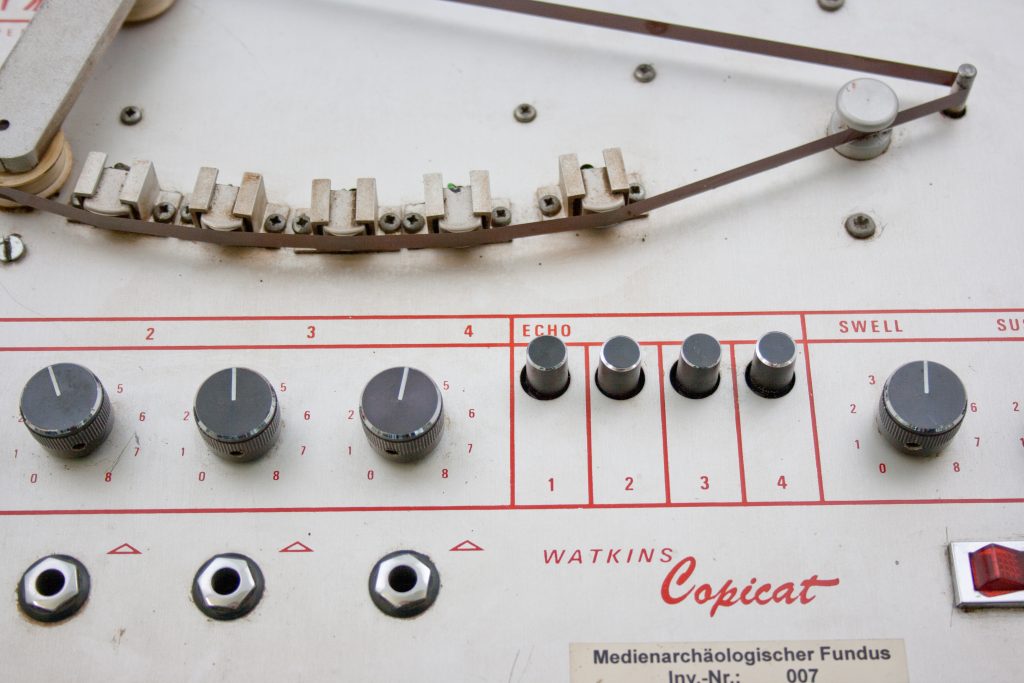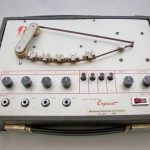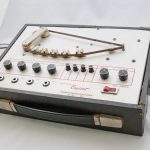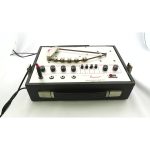Artefacts
Copicat tape echo
Copicat tape echo
(Accession Number: Watkins Copicat Super-IC, accession no. 007)
The Watkins Electric Music (WEM) Copicat tape echo creates audible repetitions of sounds by using an endless tape loop. As an electronic effect for rock musicians, it was popular during the 1960s, undergoing a series of modifications in the decades following its creation by Charles Watkins in 1958. It is notable for its successful combination of several distinct areas of audio technology: electronic recording, the use of endless loops, and the use of an intermediate storage medium (tape) to achieve delayed playback. By means of multiple tape heads set up in a row, the Copicat permits different amounts of delay between recording and playback, as the tape needs more or less time to reach the position after it has passed the recording head. Tapping into the specifics of human perception of repeating sounds, the Copicat enables a whole range of effects, from simple echoes, where the repetitions are still distinguishable, to dense, wobbling sound landscapes. According to a 2008 oral history interview with Watkins, the Copicat was inspired by the complicated technical setup, involving two tape recorders, that was employed by the Morino Marini Quartet. Endless loop tape recording arrangements were also widely used for artistic purposes, in aeronautics (as crash recorders), and in other domains during the second half of the twentieth century.
These pictures show the Watkins Electric Music Copicat tape echo device. According to a collector’s website, this version of Copicat was produced in the late 1970s. It features four inputs with gain adjustment, four buttons for the selection of the playback heads, and two additional controls labeled “swell” and “sustain,” used to set the level of the echo signal and the amount of feedback.
The photographs were taken by Nikita Braguinski at the Media Studies department, Humboldt-Universität zu Berlin, in April 2018. The unit shown here is part of the department’s collection of historical apparatus, the Media Archaeological Fundus (Watkins Copicat Super-IC, accession no. 007).
The Media Archaeological Fundus at the Humboldt-Universität zu Berlin
Collector’s website listing Copicat models
National Association of Music Merchants (NAMM): Interview with Charles Watkins, May 16, 2008
Collector’s website listing Copicat models produced between 1958 and 2009
© 2015 – 2024 Humboldt-Universität zu Berlin












